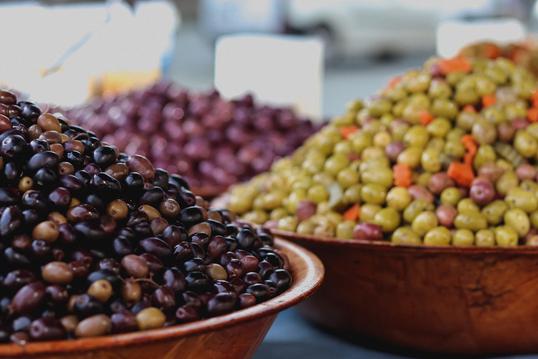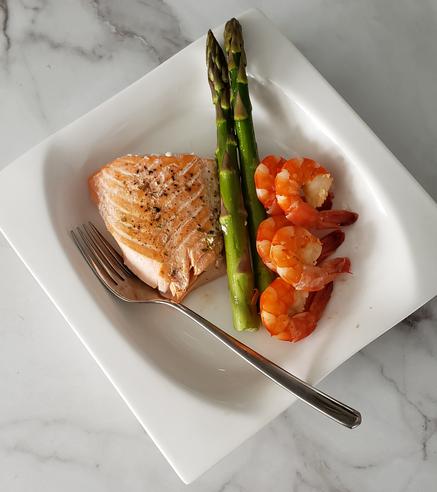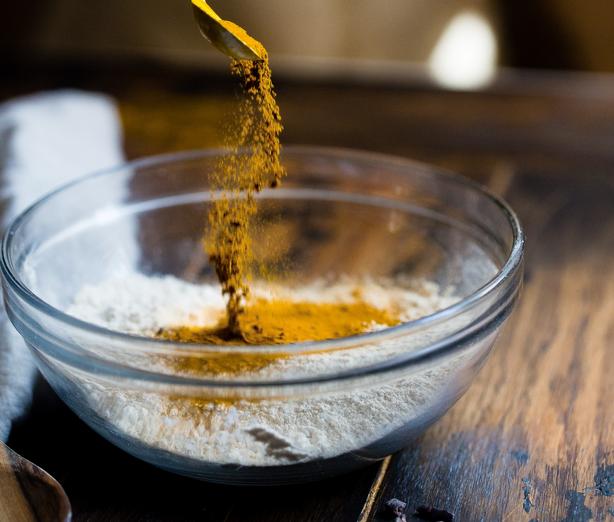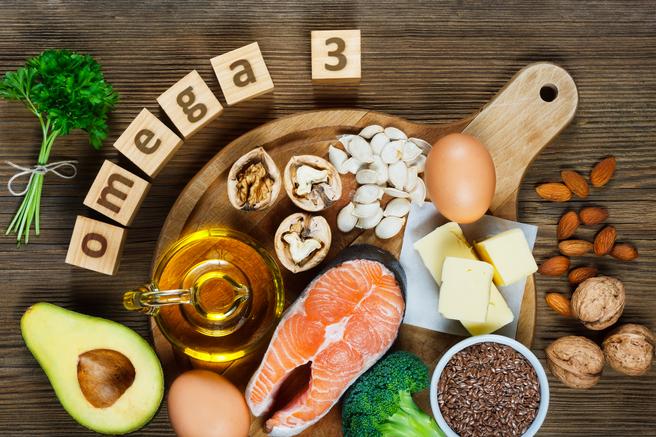Getting Rid of Chronic Inflammation

Inflammation is part of our wellness vocabulary now. You know it’s not good. You know you should try to avoid it. But, where should you start?
Here’s the deal.
When you are in pain - especially ongoing pain - it can be hard to know where to begin. It’s hard to make decisions, much less make a plan.
At Daniels Chiropractic our goal is your entire well-being. Part of our mission is to educate you on good choices and healthy lifestyle adjustments so that the treatment we give you in our Racine, Caledonia and Mt. Pleasant office is supported by everything you do at home.
First, let’s cover the basics of inflammation and then we will set you up with a plan to implement today.
What is Inflammation?
Inflammation is the body’s response to injury. Tissues swell and get red. This signals the immune system to get busy healing the damaged tissue.
Think about the last time you got a splinter. The redness and swelling was saying,
- “Hey, what is this?”
- “We need to get rid of this. It doesn’t belong here.”
It was helpful inflammation.
That splinter does not belong and you need to get it out. When you catch a nasty cold virus, your respiratory system can swell up as an alert - think stuffy nose and sore throat - and your body sends out its fighters - white blood cells - to take care of business.
Again, this is the healthy use of inflammation. Short-term and for a good purpose.
Unhelpful Inflammation
But, sometimes the body mistakenly sees its own cells or tissues as harmful.
The immune system goes into overdrive attacking things that don’t need to be attacked. This is what’s happening in Lupus, an autoimmune disorder, or in sepsis, an acute, out of control attack on one’s own circulatory and vascular system.
Unhelpful inflammation can sometimes come on gradually and become a chronic, long-term condition.
One example of this is when we gain excess weight. Our fat cells secrete cytokines that increase inflammation. When there are too many of them the delicate balance of our immune system gets off-kilter and inflammation skyrockets.
Another example of unhelpful inflammation is in the case of Lyme disease. The inflammation and disease-fighting cells can’t get ahead and beat the illness and so the inflammation just keeps on going, putting the joints and muscles in pain.
Sometimes the body is confused and has an inflammatory response when one isn’t needed. You may have antibodies to gluten and they also attack cells that look like gluten, causing cell damage.
Whatever the cause, chronic inflammation wreaks havoc and pain in the body and we want to help you fight it.

Dangers of Inflammation
As we have pointed out, there are good kinds of inflammation - typically the shorter, more acute kinds. And there are bad kinds - longer and uncontrolled.
When the body doesn’t learn to turn off inflammation it can trigger diseases such as heart disease, Alzheimer's, cancers, depression, autoimmune disorders, and diabetes.
For example, inflammatory cells in the blood will cause plaque build in the arteries. The body is on high alert for too long with chronic inflammation and that can damage the heart, brain, and other organs.
Science is still unearthing all of the effects of chronic inflammation. But we’ve learned enough to know that it is typically very unhelpful and often downright harmful.
You may not always be able to turn off a bad inflammatory response, but you can make lifestyle changes that dramatically decrease it.
Ways to Decrease Inflammation
It’s better to not think in extremes - as if you MUST eliminate certain things or ONLY eat certain things. Or that the best exercise is an extreme regimen.
If we want to make lasting change, we should take incremental steps, incorporating them into our lives until they become routine.
For example, if you have never made fish at home before, then a goal of serving fish three times a week is a bit much. It takes time to figure out what you like and how you like it. You need it to be sustainable, right?
But there are real changes that you can make that make a real difference in how you feel.

Add the Right Foods
More Veggies. Generally, whole plant foods have terrific anti-inflammatory properties. So eating a rainbow of fruits, veggies, whole grains and legumes is the best place to start.
Focus on Eating Those High in Antioxidants. Antioxidants repair cell and tissue damage.
Colorful Fruits like blackberries, blueberries, raspberries, strawberries, and grapes have anthocyanins that fight inflammation.
Bright and dark veggies like leafy greens (spinach, kale, collards), beets, celery, tomatoes, and avocados have beneficial anti-inflammatory properties.
One study showed that eating a burger with a slice of avocado is better than the burger alone. The former leaves lower levels of inflammatory markers.
Crunchy cruciferous veggies like broccoli, cauliflower, and brussel sprouts are high in sulforaphane, an antioxidant with anti-inflammatory properties.

The Mediterranean diet is an example of an anti-inflammatory diet. It’s full of fruits, vegetables, fish, and whole grains. It limits unhealthy fats, such as red meat, butter and egg yolks. And it limits processed and refined sugars and carbs.
Check with your primary doctor to get his or her opinion on the Mediterranean diet.
Drink green tea. We’ve heard a lot about green tea and its benefits through the years, but it is worth revisiting.
Regular use of green tea reduces your risk of cancer, Alzheimer's disease, heart disease, and obesity.
These are significant effects. How does it do this? Green tea contains a substance called epigallocatechin-3-gallate (EGCG). EGCG inhibits inflammation by reducing cytokines that increase inflammation. And it does it very well. Overall, green tea has significant antioxidant and anti-inflammatory properties.
So, even if you don’t love the taste, it is worth adding a cup into your daily routine if you know you have chronic inflammation.
Use Olive Oil Liberally. In one study on the Mediterranean diet, inflammatory markers significantly decreased in the subjects who had 50 ml of olive oil daily.
The antioxidant oleocanthal which is found in olive oil, has been compared to anti-inflammatory drugs like ibuprofen. Extra virgin olive oil offers much better anti-inflammatory benefits than refined olive oils. So, look for “Extra Virgin” on the label.
Herbs and spices are terrific sources to fight inflammation. The common ones you may already have are cloves, cinnamon, ginger, rosemary, black pepper, chili peppers, and turmeric.

The Spice of Life
Curcumin, found in the earthy spice turmeric, has wondrous anti-inflammatory qualities. For anti-inflammatory benefits it’s better to take curcumin as a supplement.
Eliminate the Wrong Foods
It’s generally a bad idea to think of foods as good or bad; but some foods are better in moderation or as a special treat. If you need to reduce inflammation, then the more you can limit certain foods, the better you will feel.
Eat Less Red Meat
Red meat can increase inflammation. Make substitutions more times than not: pork, soy-based protein, fish. If you LOVE your burger or steak, aim for eating red meat only once a week.
Cut Out Processed Foods
Boxed, sugary cereals, sugary drinks, deep-fried food, and pastries all raise inflammation. Processed foods often contain unhealthy fats that are also linked to inflammation.
Control Blood Sugar
Limit or avoid simple carbohydrates, such as white flour, white rice, refined sugar and anything with high fructose corn syrup. These all increase inflammation.
Reduce Your Alcohol Intake
Certain drinks spike your blood sugar and research suggests that alcohol causes inflammation in the intestines and impairs the body’s ability to fight inflammation. It’s a bad cycle to get into particularly if you already suffer from chronic inflammation.
Get your Omega-3s

Omega-3 fatty acids help regulate your inflammatory response and may help regulate pain that comes from inflammation. Getting enough of these will go a long way to reducing your inflammation.
Know where to find it? Salmon and tuna are good sources. Walnuts, pecans, ground flaxseed and soy are other great sources.
If you can’t eat enough fish or nuts, fish oil supplements have been shown to be quite effective in reducing the body’s inflammatory response.

Get Moving. Keep Moving.
If you are already someone who exercises, then way to go and keep it up!
If you have been more sedentary, it’s time to get moving. Check with your doctor about any limitations he or she has for you.
Research regularly shows that moderate exercise reduces inflammation and is better than high intensity for regulating inflammation.
So, there’s no need to go crazy and do sprints or do HIIT (high intensity training). Walking briskly is a great place to start.
Lose Weight
Research shows that losing 10% of your body weight can greatly improve inflammation. Talk with your doctor before attempting a major weight loss program. If you need to lose a lot of weight, then, take heart because losing the first 10% is the easiest!

Get Your Sleep
Routinely not getting enough sleep leads to increased inflammation. Conversely, getting the sleep your body needs helps keep inflammation at bay.
What’s Next
Feeling overwhelmed from all of these ideas and suggestions?
Need some specific guidance? Here’s a simple plan to start you on the road to reducing chronic inflammation.
A Simple Plan: 8 Steps to Reduce Inflammation and Pain
Work through these 8 steps. Make a grocery list and plan enough for the next two weeks. Keep a simple journal (even a piece of paper will do) of what you eat and how you feel each day.
- Eat a salad rich in antioxidants for one meal a day.
- Drop alcohol every day of the week except one.
- Drink green tea in the afternoon instead of coffee or diet soda.
- Drop white flour and white sugar for two weeks and journal how you feel. (You can do it!)
- Chop raw veggies (broccoli, peppers, cauliflower) to snack on with hummus.
- Keep walnuts and raw almonds on hand for snacking.
- Eat chicken and salmon for dinner protein instead of red meat every day but one.
- Go to bed early enough to get 7-8 hours sleep.
Can you commit to doing this for two weeks? If you do we’d love to hear from you at Daniels Chiropractic.
After you get into a rhythm with these 8 steps consider adding other benefits listed above or eliminating someone else that promotes inflammation. Each small step builds better health.
If you are in pain and would like to pursue relief, give us a call at 262-638-9999 to make an appointment. We are committed to helping you feel, move, and live better. Give us a call today, request a visit, or check us out online.
Daniels Chiropractic Office
2609 Rapids Drive
Racine, WI 53404
Phone: 262.638.9999
Fax: 262.638.0742
